When planning a trip to Japan, the captivating city of Hiroshima should be at the top of your must-visit destinations. Steeped in history and renowned for being the site where the first atomic bomb was dropped in 1945, Hiroshima is home to many attractions and things to do that go beyond its tragic past. While the city is home to numerous memorials and landmarks that honour the lives lost, it is also recognized globally for its advocacy for peace and nuclear disarmament. As a result, Hiroshima draws countless visitors each year and even hosts international conferences.
If you haven’t added Hiroshima to your Japan itinerary yet, our list of the top things to do in Hiroshima will surely persuade you. From historic landmarks to culinary delights, there are so many fantastic things to do in Hiroshima. Here are our top recommendations for must-see attractions in Hiroshima.
Table of Contents
- Visiting Hiroshima
- Where to stay in Hiroshima
- Top things to do in Hiroshima
- See the Atomic bomb dome
- Visit the Hiroshima Peace Memorial Park
- Learn at Hiroshima Peace Memorial Museum
- Hiroshima Victim’s memorial cenotaph (Peace arch)
- Flame of peace memorial park
- See the Children’s Peace Monument
- Take a trip to Miyajima Island
- See the Itsukushima Shrine
- Take the Miyajima Ropeway
- Climb Mount Misen
- Stroll through the Shukkei-in Garden
- Eat at Okonomimura
- Visit the Hiroshima museum of art
- Ride on the Hiroden
- Explore the Hiroshima Castle
- Visit The Mazda Museum
- Go shopping in Hondōri
- Shimanami Expressway
- Final thoughts
- Frequently Asked Questions
Visiting Hiroshima
This guide is part of my extensive 2 weeks in Japan itinerary and 3 weeks in Japan itinerary. To help you prepare for your trip, I’ve put together a few more articles to ensure a smooth holiday to Japan.
Check when is the best time to visit Japan to plan your Hiroshima trip properly. I usually recommend visiting during the cherry blossom or in the autumn. Winter in Japan is great if you’re looking for an off the beaten path experience with more affordable price tags.
You can see what to pack for Japan with my extensive guide and don’t miss what to wear in Japan as the country is a little different when it comes to fashion, cuts, and colours.
If you’re looking for a top Japan Guide written by a Japan expert, then I’ve got you covered.
Don’t forget to check my book on Japanese manners and customs and please don’t forget to order your JR Pass as soon as possible! Enjoy Hiroshima and Japan
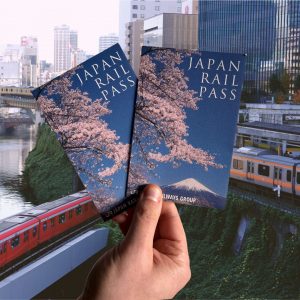
Japan Rail Pass
The optimal way to explore Japan is with a rail pass that is available for durations of 7, 14, or 21 days, offering unlimited travel across the country. Shinkansen included!
Where to stay in Hiroshima
For first-timers, the Hiroshima Downtown area is an excellent place to stay. It’s close to the main attractions, just a few minutes from the main station, and a fantastic starting point for exploring the city. There are a variety of hotels and accommodation in the city ranging from budget to top luxury. Groups of travellers or families with kids also have larger villas and flats with more beds and futons, as well as a kitchen.
For the full breakdown on areas and hotels, don’t forget to check my full guide on where to stay in Hiroshima.
This is the best luxury hotel in Hiroshima if you’re looking for a top notch experience in the city. You’ll have 4 restaurants, an indoor pool and a fitness centre. The rooms are all clean and comfortable and the hotel is very well located just a minute from the train station.
Click here for prices and book Sheraton Grand Hiroshima Hotel
A fantastic mid-range hotel with great prices and a variety of rooms to pick from. Connected directly to JR Hiroshima Shinkansen Station, Hotel Granvia Hiroshima is a modern Michelin 3-star rated hotel that features free Wi-Fi in rooms, massage services, and six restaurants for a delightful culinary experience.
A brilliant budget option with clean and comfortable rooms. Each room comes with towels, linen, and a private bathroom for your comfort. Prices are fantastic, especially for the location of the hotel which is just 400 yards from the main Hiroshima station.
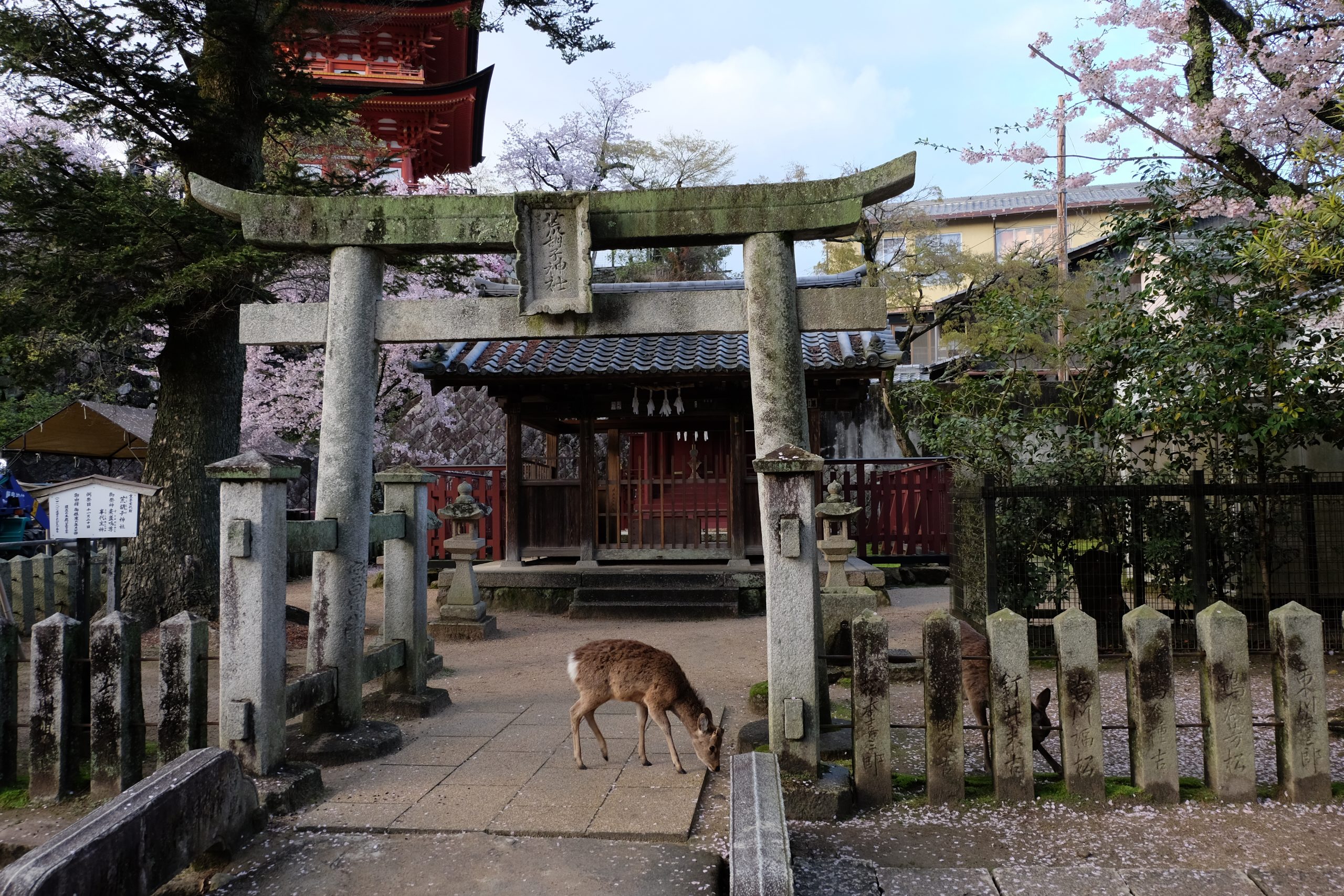
Top things to do in Hiroshima
Hiroshima is very much a lively city in Japan with cool food, fun things to do, and great attractions. While many come to visit for its history, Hiroshima has so much more to give. It’s the birthplace of Mazda motors, it is renowned for its unique version of okonomiyaki and has easy access to the stunning Itsukushima Shrine, a UNESCO World Heritage Site.
If you’re a foodie, I cannot recommend Hiroshima enough. Besides the okonomiyaki, you will want to try my favourite Japanese food called Momiji Manju, a maple-leaf shaped cake which is also a popular souvenir. Don’t miss the Hiroshima oysters with butter and soy sauce and, of course the classic tsukemen that are thick noodles dipped in broth.
Here are my top recommendations for things to do in Hiroshima that are insightful and exciting.
See the Atomic bomb dome
One of the most iconic and powerful landmarks in Hiroshima is the Atomic Bomb Dome, part of the Hiroshima Peace Memorial Park. This is the only structure that remains standing near the hypocentre of the first atomic bomb that was detonated on August 6, 1945, and it remains in the same condition as it was immediately after the explosion. Despite being a stark and haunting reminder of the destructive force of nuclear weapons, it also represents the hope for world peace and the eradication of all nuclear weapons.
The Atomic Bomb Dome has been preserved through the efforts of many people, including the city of Hiroshima, and is now a UNESCO World Cultural Heritage Site. It consists of the surviving Genbaku Dome, which means “atomic bomb” in Japanese, within the ruins of the building. The dome is a symbol of both the devastating power of humankind and the hope for permanent peace worldwide.
While you cannot enter the Atomic Bomb Dome, it remains a popular tourist attraction that you can view from the outside. The dome is surrounded by the Hiroshima Peace Memorial Park, which features several other memorials and monuments dedicated to the victims of the atomic bomb.
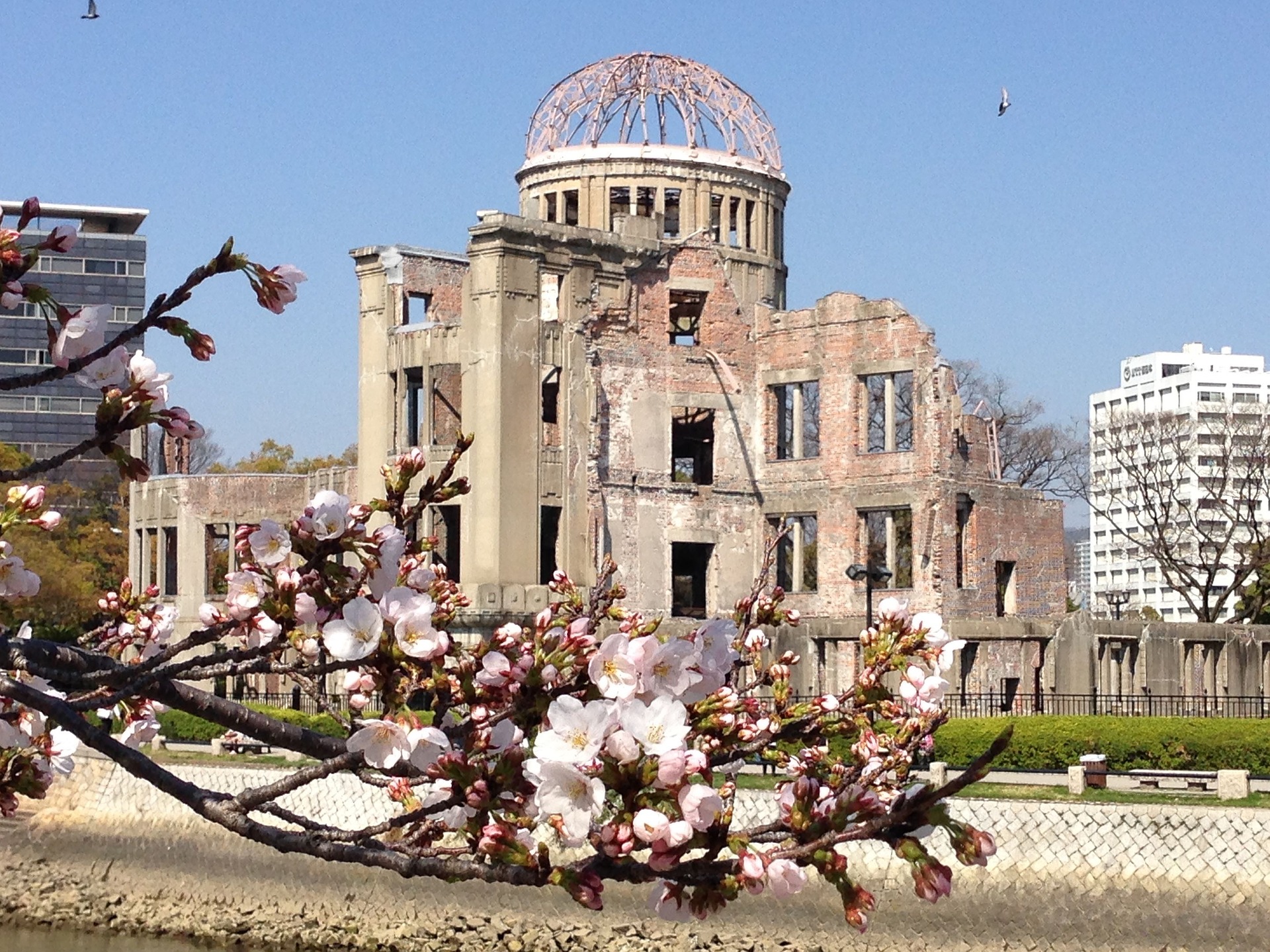
Visit the Hiroshima Peace Memorial Park
The Hiroshima Peace Memorial Park is a serene and poignant space located in the heart of Hiroshima. Built on an open field that was created by the atomic bomb explosion that occurred on August 6, 1945, the park is a dedicated space for remembering the victims of the first nuclear attack in history and advocating for world peace.
Designed by renowned Japanese architect Kenzo Tange, the park features numerous memorials, monuments, museums, and lecture halls that attract over a million visitors each year. The park is located southwards from the Atomic Bomb Dome and spans over 120,000 square meters, making it a green oasis in the middle of the bustling city.
To reach the Hiroshima Peace Memorial Park, take the Hiroshima Electric Railway from Hiroshima Station and get off at either Genbaku Dome-mae Station or Hon-dori Station. Visiting the park is a must-do activity for anyone interested in learning about the history of Hiroshima and advocating for world peace.
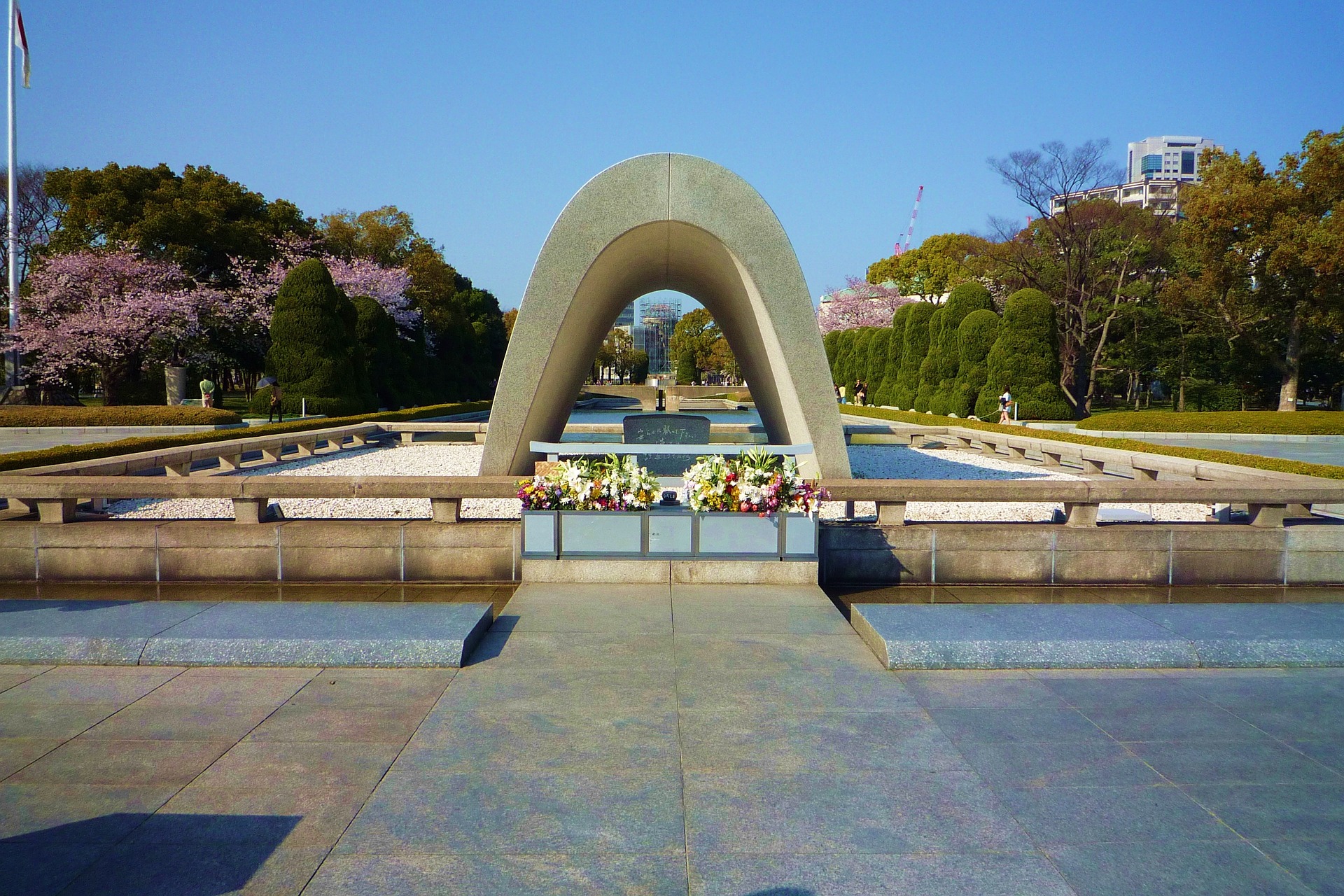
Learn at Hiroshima Peace Memorial Museum
One of the most important places to visit in Hiroshima is the Hiroshima Peace Memorial Museum, which is located in the Hiroshima Peace Memorial Park. This museum is dedicated to documenting the atomic bombing of Hiroshima during World War II and aims to communicate the reality of the damage caused by the atomic bomb to people all over the world. The museum contains exhibits such as belongings left by the victims, photos, and other materials that convey the horror of the event. There are two sections in the museum, The East and the West Wings.
The East Wing, explains the history of Hiroshima City before the bomb, the lives of Hiroshima citizens during World War II and after the bombing, and information about the nuclear age and efforts for international peace.
The West Wing focuses on the damage caused by the bomb, including personal effects worn by victims of the bomb, and sections that show the destruction caused by the aftershocks of the blast.
History enthusiasts and those looking to get an insight into the bombing of Hiroshima should pay a visit to the Hiroshima Peace Memorial Museum, which offers a more profound look into the tragedy and the consequences of this historic event. There are many details that the museum brings to light that allow visitors to grasp and understand the series of events that unfolded. With that being said, the museum can be described as emotional and intense at times, so it is best to be prepared for this experience, yet it is one we highly recommend when visiting the city.
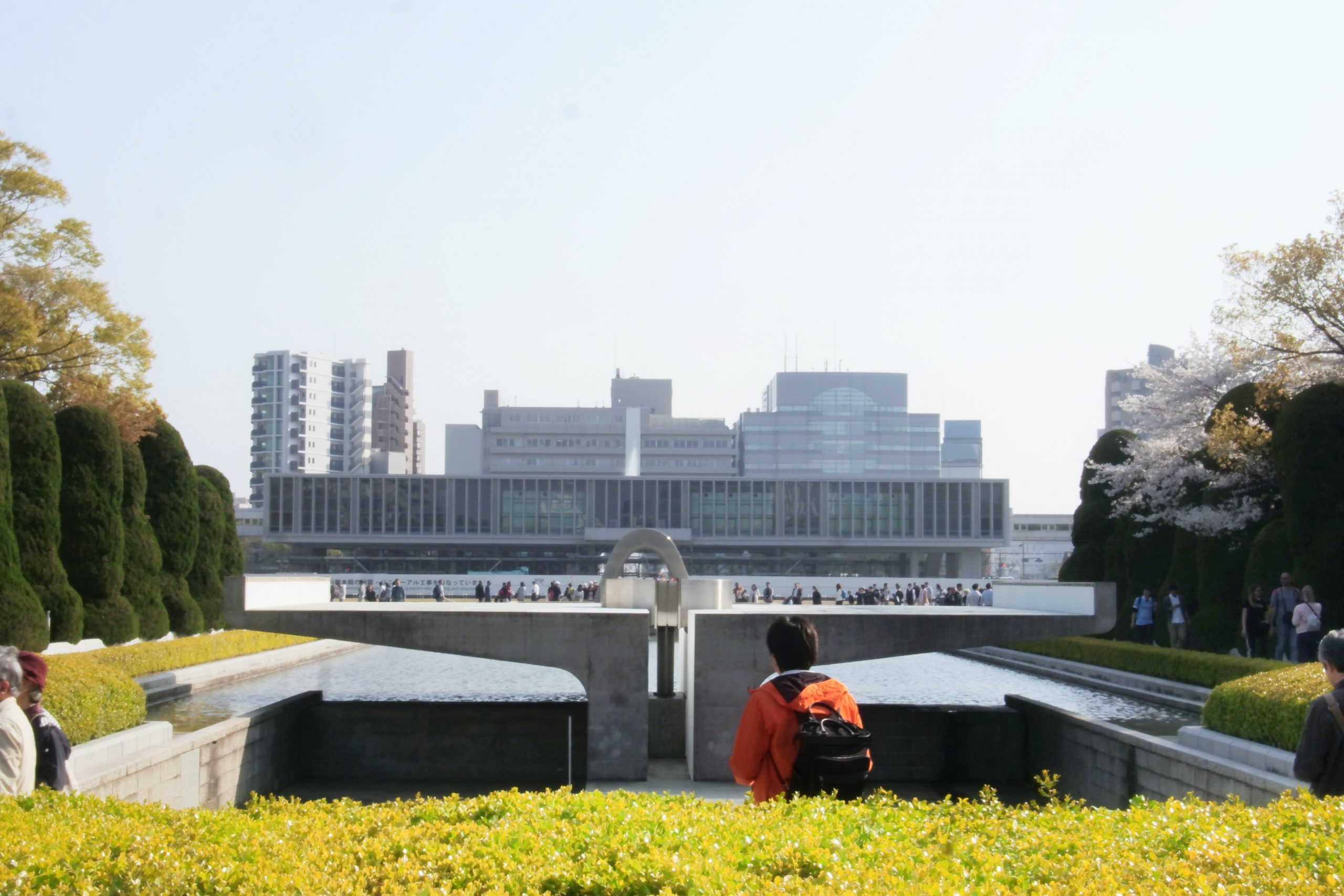
Hiroshima Victim’s memorial cenotaph (Peace arch)
Visit the Hiroshima Victim’s Memorial Cenotaph, known as the Peace Arch. This monument is located in the centre of the Peace Memorial Park and was built to commemorate the victims of the atomic bomb.
The cenotaph is a concrete arch-shaped structure that covers a stone chest containing the names of all the victims of the bombing. The arch is aligned to frame the Peace Flame and the A-Bomb Dome. The epitaph on the monument reads “Let all the souls here rest in peace, for we shall not repeat the error.”
This monument is an important reminder of the devastating effects of war and serves as a symbol of hope for a peaceful future.

Flame of peace memorial park
The Flame of Peace Memorial Park is a must-visit in Hiroshima, designed by the renowned architect Kenzo Tange. The sculpture’s base represents two wrists gathered, with two wings on either side representing two palms facing upwards to the sky.
The flame on top was lit on August 1, 1964, and has been burning ever since in protest of nuclear weapons, and will continue to burn until all nuclear weapons have been destroyed. The park is open 24 hours a day, and you can visit at any time.
See the Children’s Peace Monument
The Children’s Peace Monument in Hiroshima Peace Memorial Park is a monument dedicated to the children who lost their lives as a result of the atomic bombing of Hiroshima. It was built using money raised by Japanese schoolchildren, including Sadako Sasaki’s classmates.
Sadako, who died of leukaemia from radiation exposure, is immortalized at the top of the monument holding a wire crane above her head. She wished to have a world without nuclear weapons, and thousands of origami cranes from all over the world are offered around the monument as a sign of this wish. Beneath the main structure hangs a bronze crane that works as a wind chime when pushed against a traditional peace bell from which it is suspended. The figures that surround the monument are angels, representing that Sadako is in heaven among the other fallen angels who died during the atomic bombing in Hiroshima. The paper crane is now a symbol of peace, which was her last dying wish.
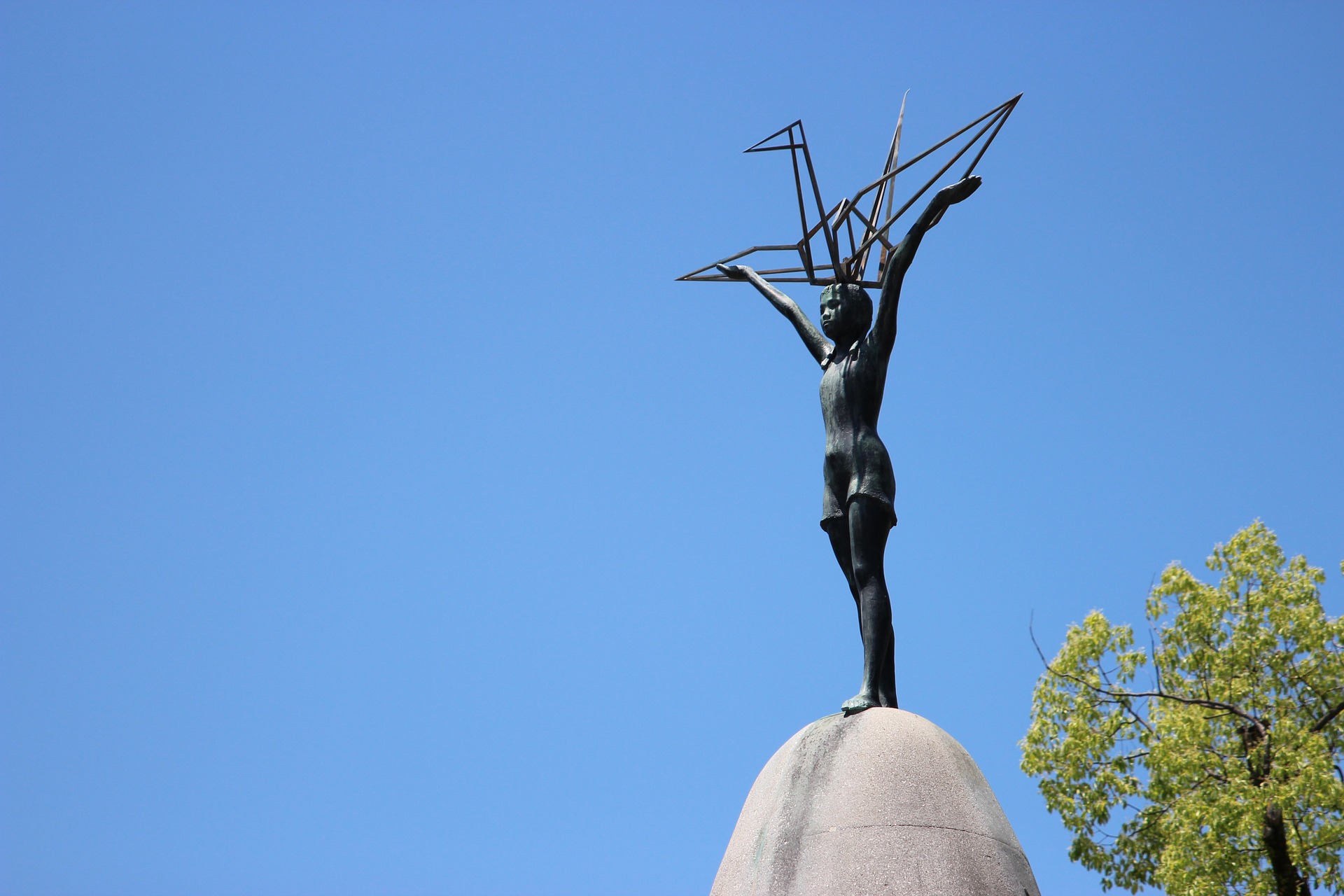
Take a trip to Miyajima Island
Miyajima Island, also known as Itsukushima, is a must-visit destination in Hiroshima. The island is famous for Itsukushima Shrine, a UNESCO World Heritage Site, and its “floating” torii gate. The shrine was established in the time of Empress Suiko, but it was Taira no Kiyomori who gave the shrine its present form.
The island is home to several temples, including Toyokuni Shrine with a five-storied pagoda and Daiganji Temple, one of the three most famous Benzaiten temples in Japan. If you visit Japan during autumn, Miyajima looks most spectacular with its autumn foliage and maple trees, which blanket the island in crimson.
Tip: Prepare to meet the semi-tamed deer residents, similar to those you can find in Nara. Keep your food and snacks away, or you might find yourself chased by a friendly, but hungry deer.
Don’t forget to try the momiji manjū, a popular Hiroshima pastry filled with azuki jam or custard, which is a popular souvenir that features a maple-leaf emblem.
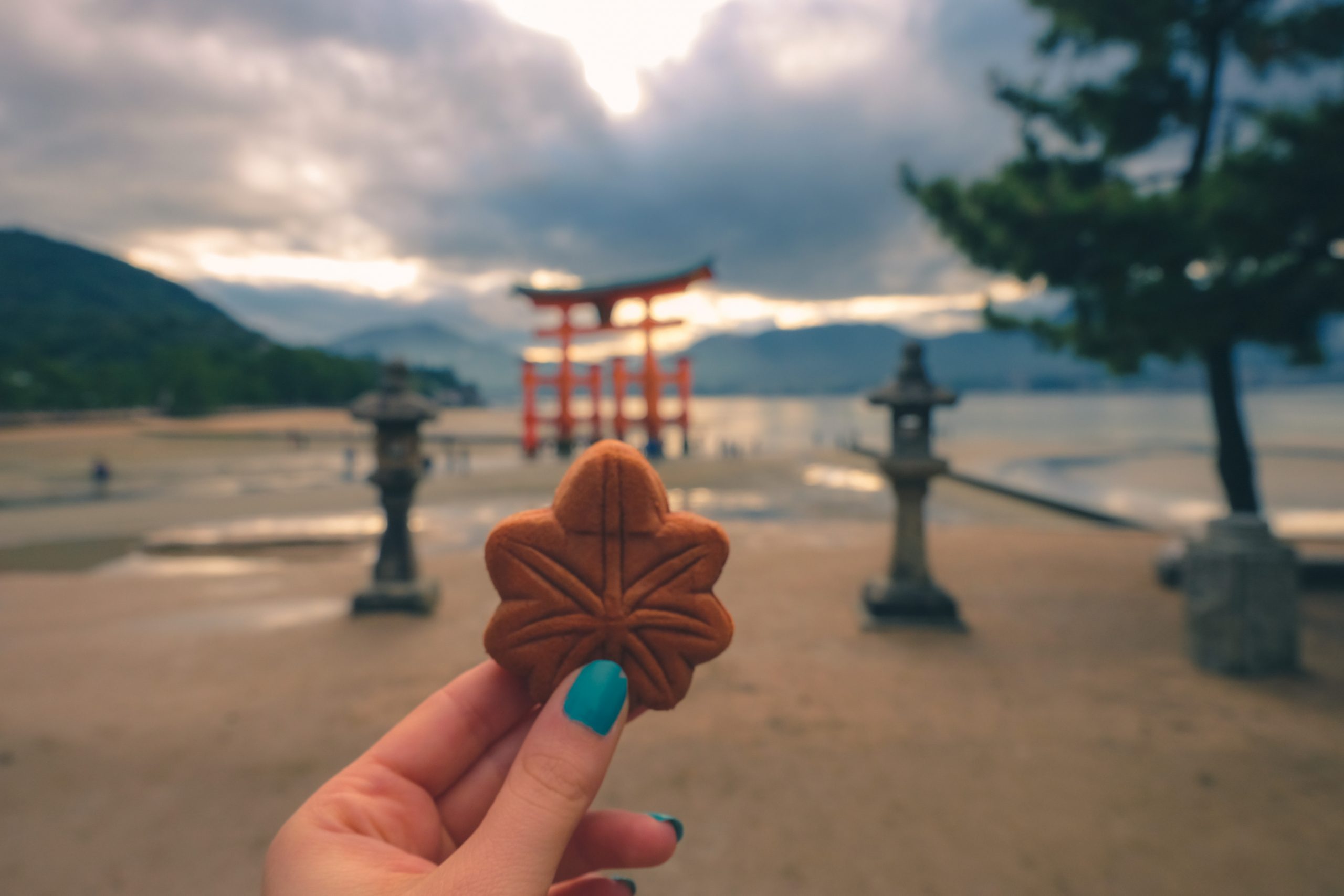
See the Itsukushima Shrine
One of the must-visit destinations in Hiroshima is the Itsukushima Shrine. The shrine is renowned for its “floating” torii gate, which appears to float on water during high tide. This Shinto shrine is a UNESCO World Heritage Site and is one of the most popular places to see in Japan.
The shrine complex consists of two main buildings, the Honsha shrine, and the Sessha Marodo-jinja, and 17 other buildings and structures that add to its beauty. The shrine is dedicated to the three daughters of Susano-o no Mikoto, known as the “three female deities” of Shinto.
The Itsukushima shrine is appreciated for its twelfth-century-style architecture and the illusion of floating on the water, separate from the island, achieved by the Shinden-zukuri style.
Witness the shrine’s beauty during low tide, where the torii gate is accessible from the island. You can go as close to the feet of the gate and admire just how imposing the floating gates are. Make sure to check the tides before planning your visit.
Interesting fact: To preserve the shrine’s purity, commoners were not allowed to set foot on the island throughout much of its history. Even today, since 1878, no deaths or births are allowed near the island.
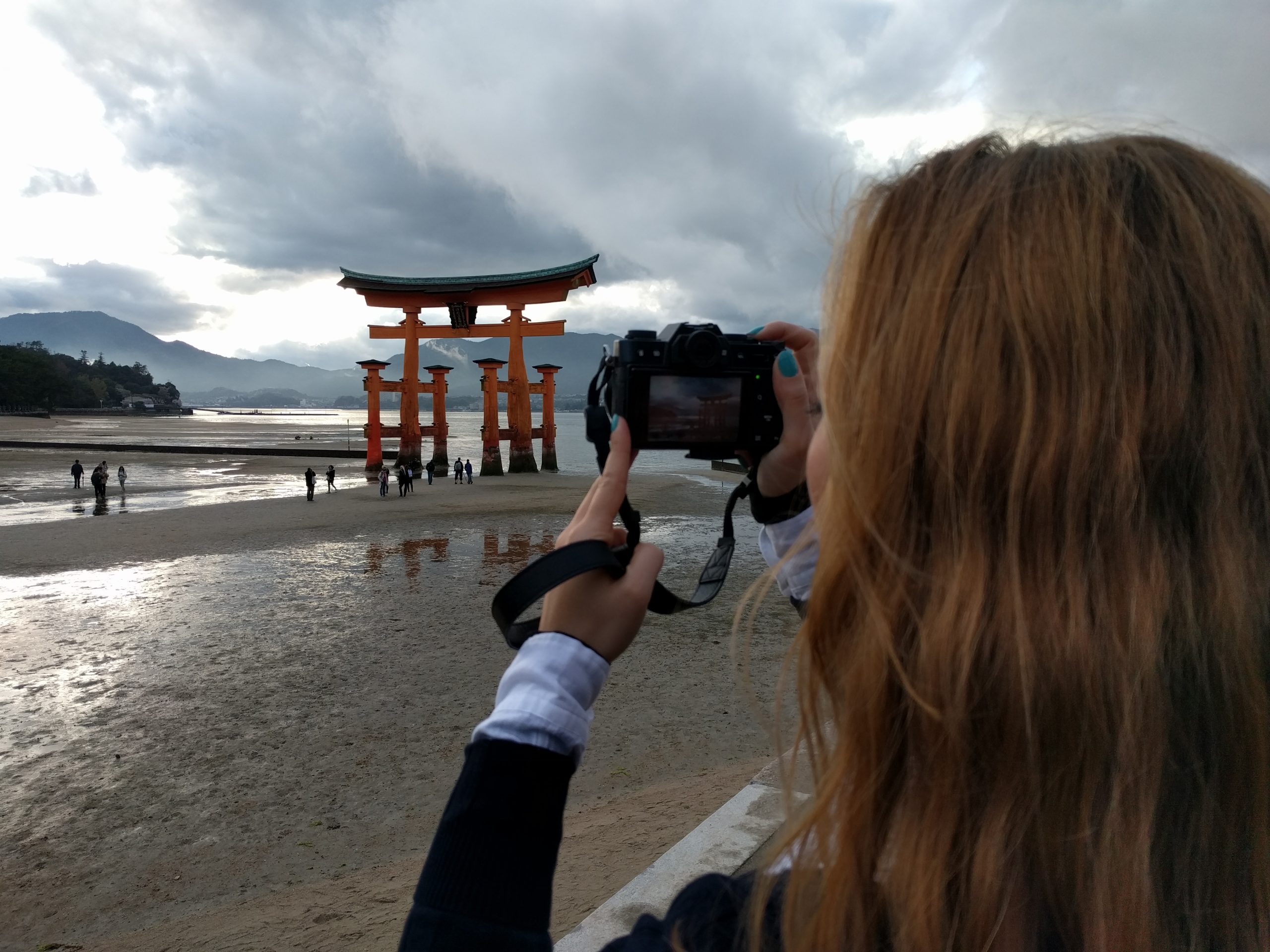
Take the Miyajima Ropeway
A trip to Hiroshima would not be complete without an aerial view of the region. This is quickly done by hopping aboard the Miyajima Ropeway, which has been operating since 1959. The Miyajima Ropeway is the easiest way to reach the summit of Mt. Misen, the most sacred part of Miyajima, which offers a magnificent view of the surrounding nature and the Seto Inland Sea.
The ropeway has two lines and operates from Momijidani Station, which can be reached by trekking uphill from Itsukujima Shrine or taking a free shuttle bus from Hotel Iwaso. After boarding the gondola lift, you will need to transfer at Kayatani Station before reaching Shishiiwa Station near the summit.
The cost for a one-way trip ranges from 510 to 1,010 yen, and the operating hours are from 9 am to 4 pm with the last gondola lift departing Shishiiwa Station at 4:30 pm. Keep an eye on the weather and the ropeway schedule, as it may be affected by wind or other conditions.
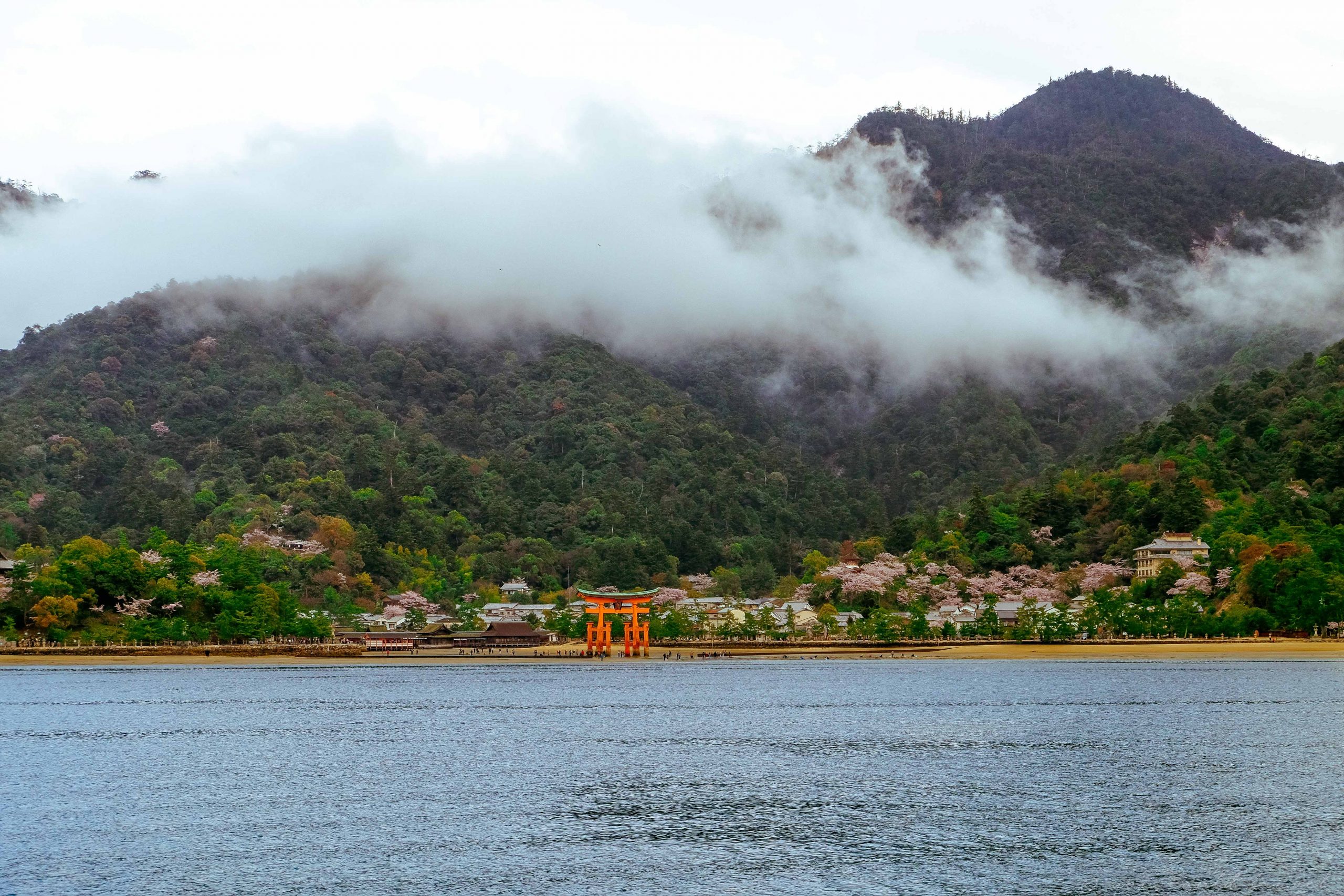
Climb Mount Misen
Mount Misen is a must-visit attraction for nature lovers and hikers in Hiroshima. Rising 500 meters above sea level, it is the highest peak on Miyajima Island, offering breathtaking views of the Seto Inland Sea and even Hiroshima City on clear days.
You can take the ropeway or hike up one of the three trails leading to the summit, with the Daisho-in Course offering the nicest views and being less steep than the other two. Along the way, you can spot deer and, if lucky, wild monkeys.
At the summit, take some time to explore several temple structures, including the Misen Hondo and Reikado, where a flame has been burning since Kobo Daishi, the founder of the Shingon sect, lit it centuries ago.
The mountain trails on Mt. Misen go through incredible primeval forest, making it one of our favourite things to do in Hiroshima.
Top tip: Stay on the island and time your hike to the top so you can catch one of the most stunning sunrises from the summit.
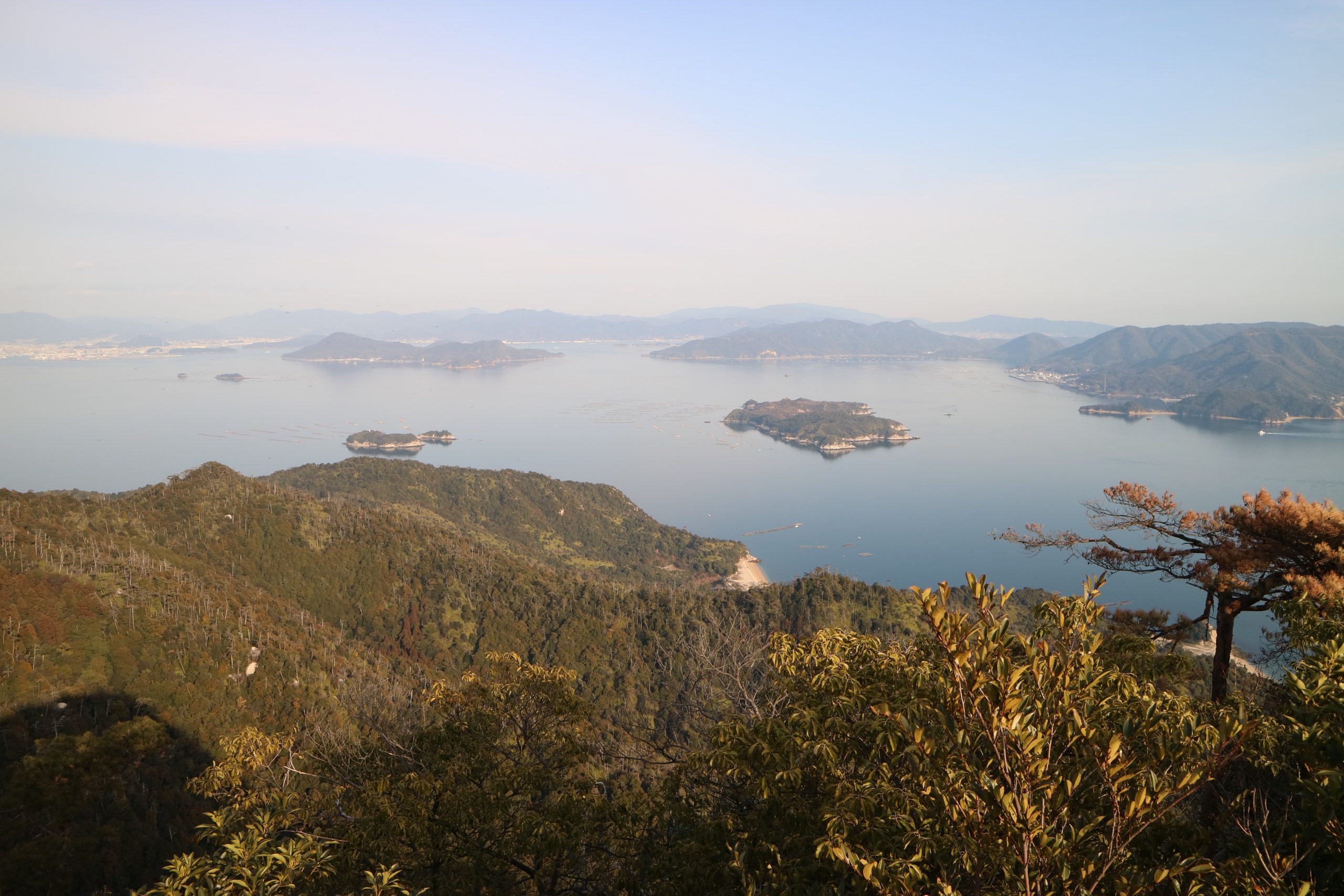
Stroll through the Shukkei-in Garden
Visit the stunning and calming Shukkei-en Garden, a historic and iconic landmark that is one of the best Hiroshima attractions. Shukkei-en presents stunning landscapes in shrunken form and features many aspects of traditional Japanese gardens.
The garden is a “circular tour style garden” and is rich in variety, filled with elements that represent mountains, valleys, rivers, lakes, and islets. The garden has been lovingly restored after suffering extensive damage in the atomic bombing and is open to the public for a small fee.
Check the seasonal tea ceremonies held in tea houses for an additional fee to learn more about this incredible Japanese tradition.
Top tip: The lake is filled with large koi carp, and you can purchase carp feed for ¥100 a bag.
Shukkei-en Garden is a lovely place to visit on any weather as even on a rainy day, the elements turn the garden into a spectacular place for nature lovers.
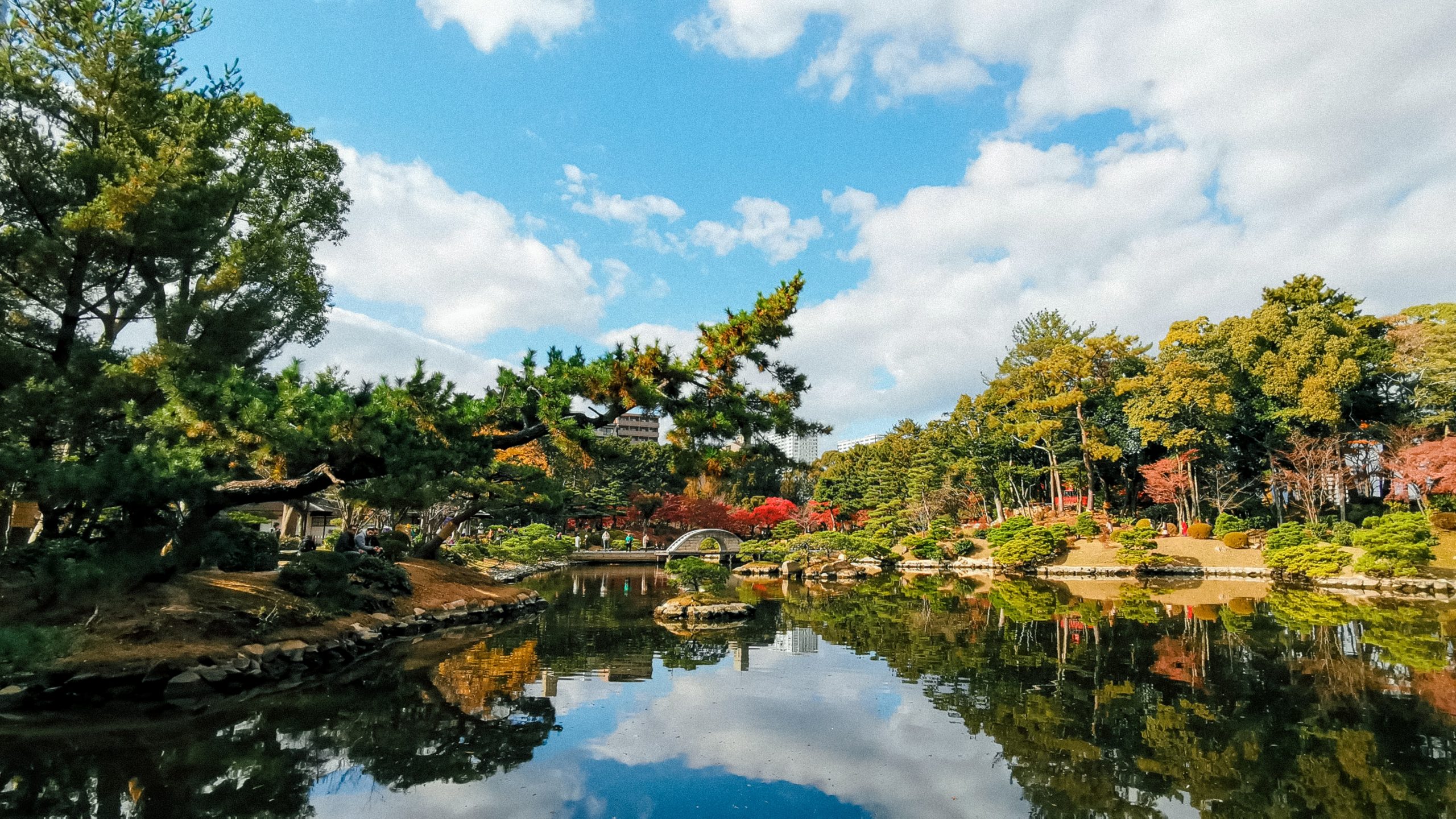
Eat at Okonomimura
Okonomimura is a multi-level building located in the heart of Hiroshima, Japan, and it’s one of the best places to experience Hiroshima-style okonomiyaki. You know we’re obsessed with everything Japanese food and okonomiyaki is no exception!
Okonomiyaki is a savoury pancake-like dish that is a local speciality in Hiroshima. Okonomimura, which means “Okonomiyaki Village,” is home to over 25 restaurants, each serving up their own unique take on the classic dish. Don’t worry, many of the restaurants have English menus, so you can visit the location with confidence.
Hiroshima-style okonomiyaki is unique in that it layers the ingredients rather than mixing them all together. The dish starts with a base of batter and cabbage, then is layered with noodles, meat, vegetables, and a fried egg on top. The whole thing is then flipped over and cooked until crispy on the outside and tender on the inside. Honestly, this is deliciousness on a plate.
Each restaurant at Okonomimura has its own unique take on Hiroshima-style okonomiyaki, with some specializing in seafood, while others focus on meat or vegetable-based dishes.
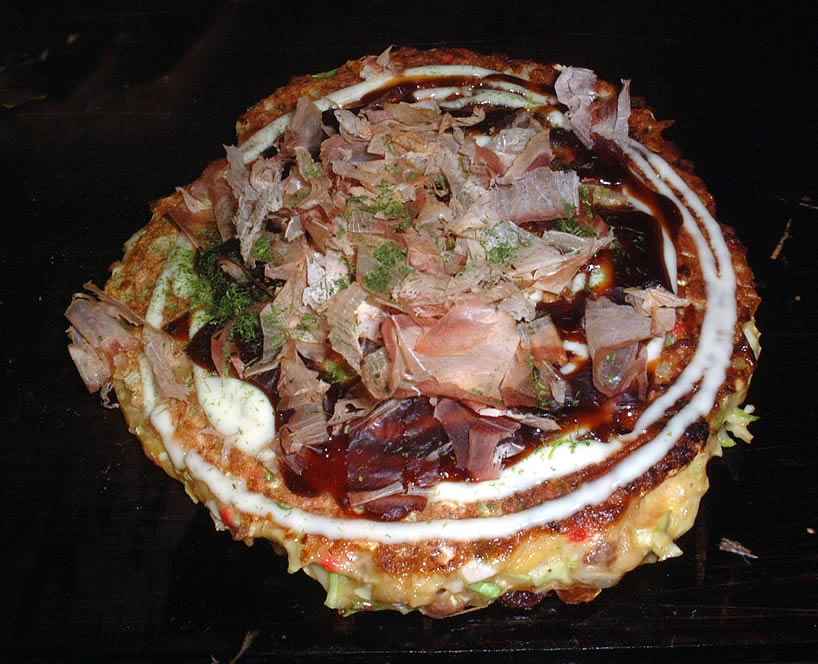
Visit the Hiroshima museum of art
The Hiroshima Museum of Art exhibits foreign works from the Romantics to the School of Paris, and modern Japanese art from the Meiji era to the present day, promoting the theme of “For love and peace.”
It is especially known for its collection of French Impressionists, including Cézanne, Manet, Renoir, and Van Gogh. The museum is located in Central Park and is adjacent to the beautiful Shukkeien Garden, offering you the opportunity to enjoy natural seasonal beauty.
The museum is open from 9:00 a.m. to 5:00 p.m. daily, with admission until 4:30 p.m. You can easily reach the museum by taking the streetcar to Hiroden Shukkeien-Mae Station or by a 10-minute walk from Hiroshima Station.
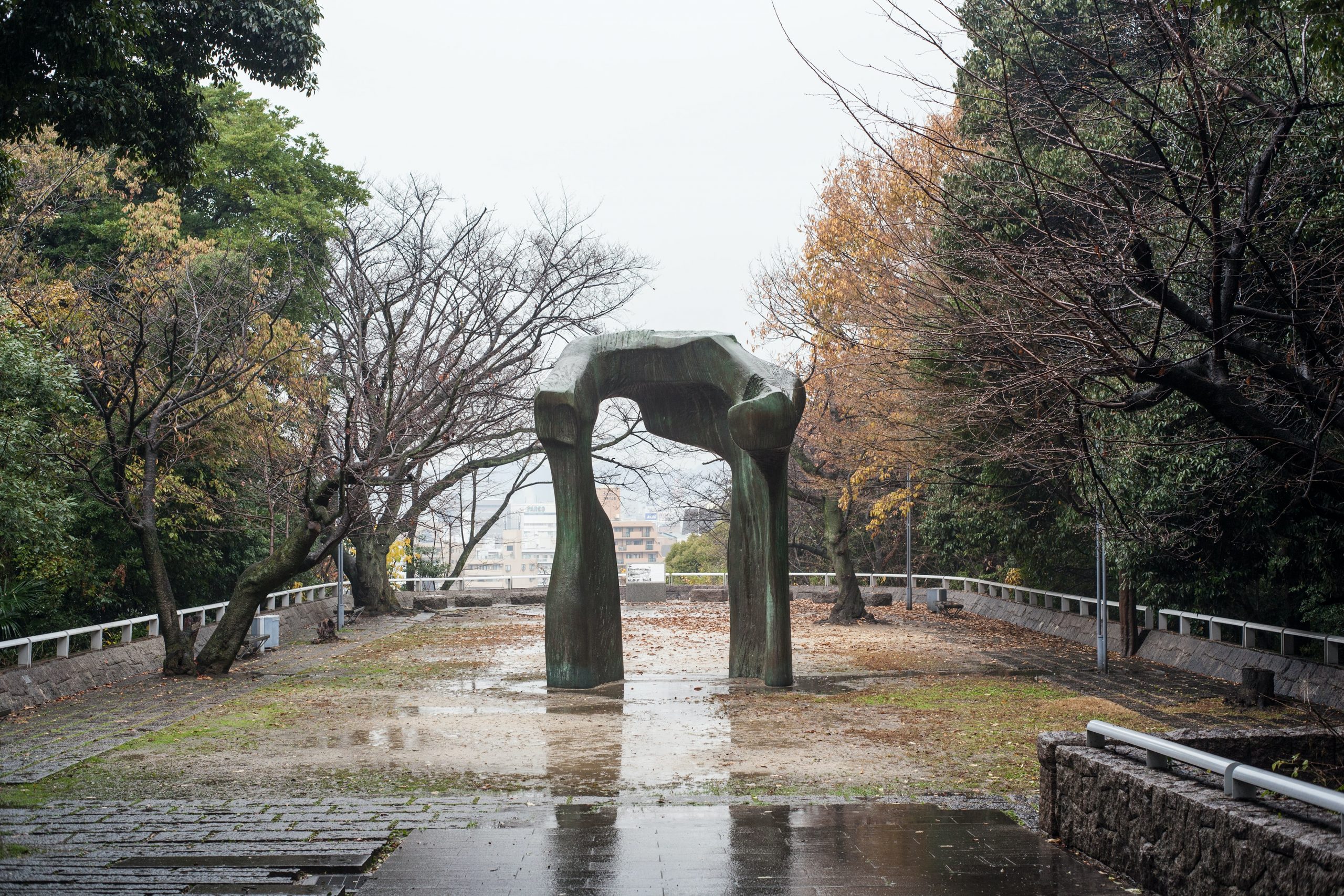
Ride on the Hiroden
Hiroden is a vintage electric railway in Hiroshima, and a loved and popular attraction in the city. Jump in one of the 300 trams and enjoy a nostalgic experience around Hiroshima. Undoubtedly, the trams passing through the city all day are hard to miss. It’s recommended to hop on and experience the streetcars that have provided locals with transportation since 1912, steeped in tradition and pride.
Top tip: You can get a variety of tickets for the Hiroden electric railway if you’re planning to explore Hiroshima over a few days. Remember that you only have to pay at the end of your journey, not at the beginning! It’s a super convenient and hassle-free way to get around and discover all that Hiroshima has to offer.
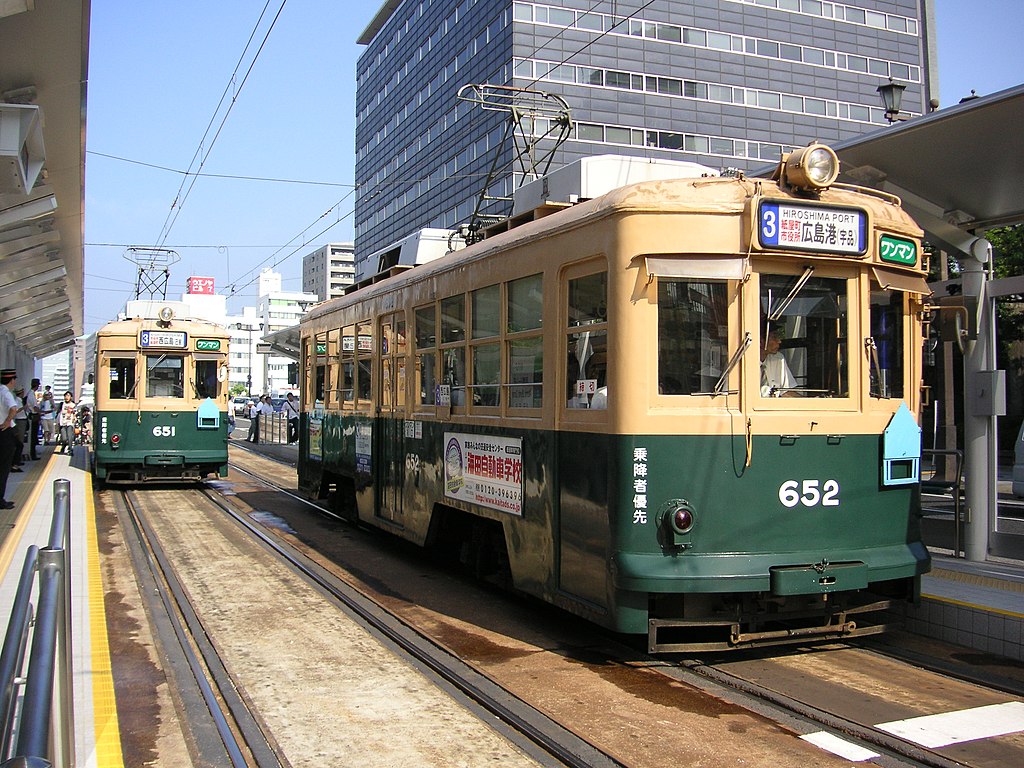
Nkensei at Japanese Wikipedia, CC BY-SA 3.0, via Wikimedia Commons
Explore the Hiroshima Castle
Let’s talk about the exciting Hiroshima Castle! This historic castle, also known as the Carp Castle, was originally built in the 1590s and was the residence of the daimyō of the Hiroshima Domain. Although it was destroyed in the atomic bombing in 1945, the castle was rebuilt in 1958 as a replica of the original and now serves as a museum of Hiroshima’s history before World War II. The reconstructed castle features the main tower and is an excellent example of a flatlands castle.
Although the original Hiroshima Castle was destroyed during the bombing, the reconstructed replica is even more impressive and showcases the intricate details of Japanese architecture. You’ll be amazed by the stunning exterior, but wait until you climb to the top for breathtaking views. The onsite museum, castle gardens, and art collection offer plenty to see and do.
To get there, take a ten-minute walk from Kamiyacho-nishi or Kamiyacho-higashi tram stop or a 15-minute walk from the Peace Park.
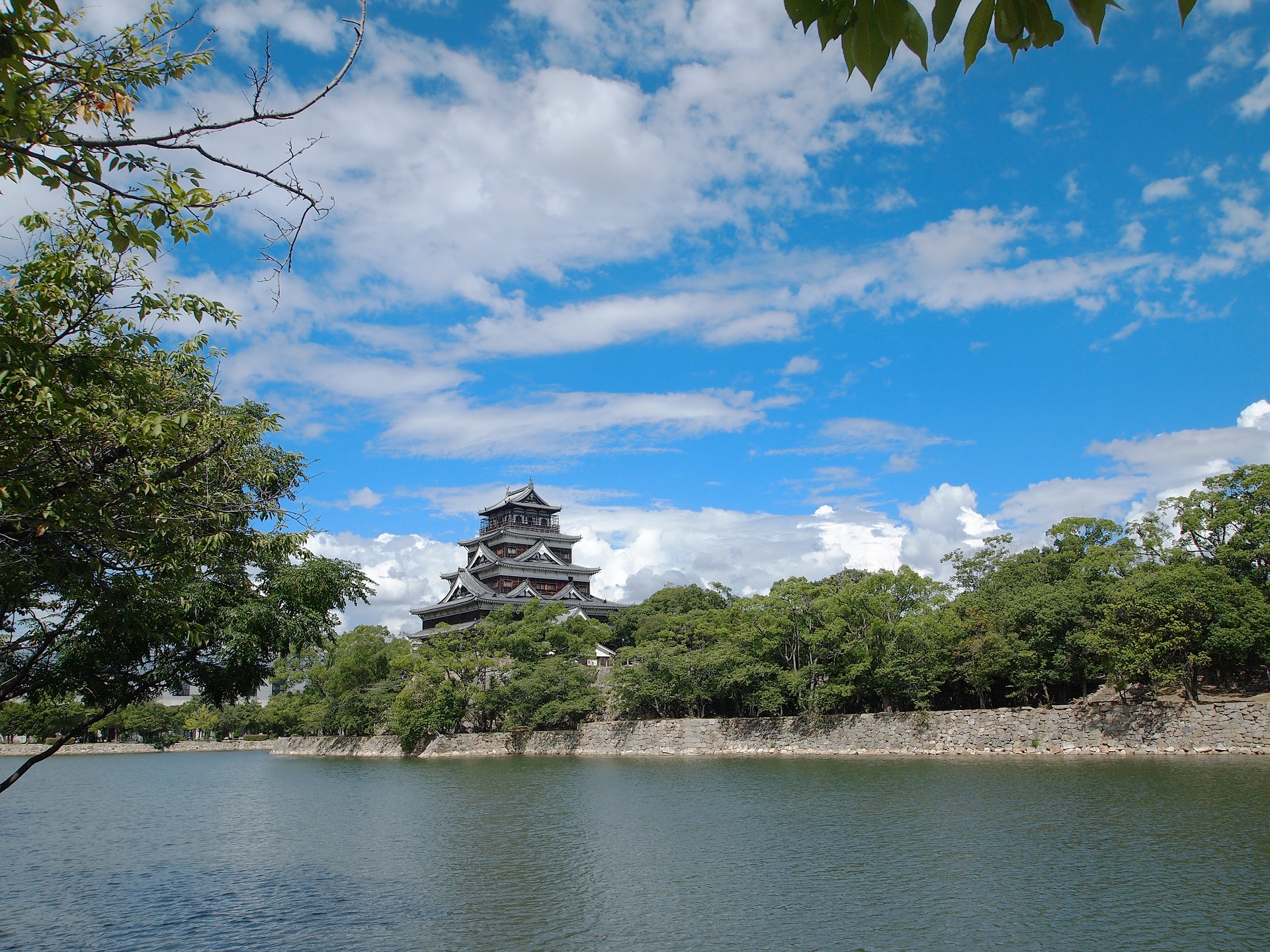
Visit The Mazda Museum
Car enthusiasts, listen up! Hiroshima is home to Mazda, and there’s no shortage of opportunities to learn about this iconic car brand.
The Mazda Museum is a must-visit, but you’ll also spot plenty of Mazda cars on the roads as you explore the city. For an inside look at the production line and a visit to the corporate headquarters, make sure to stop by.
Mazda was founded in Hiroshima in 1920 and has since become a global sensation, drawing car enthusiasts from far and wide. While the museum currently offers tours in Japanese only, English tours will resume soon, so book in advance to avoid missing out.
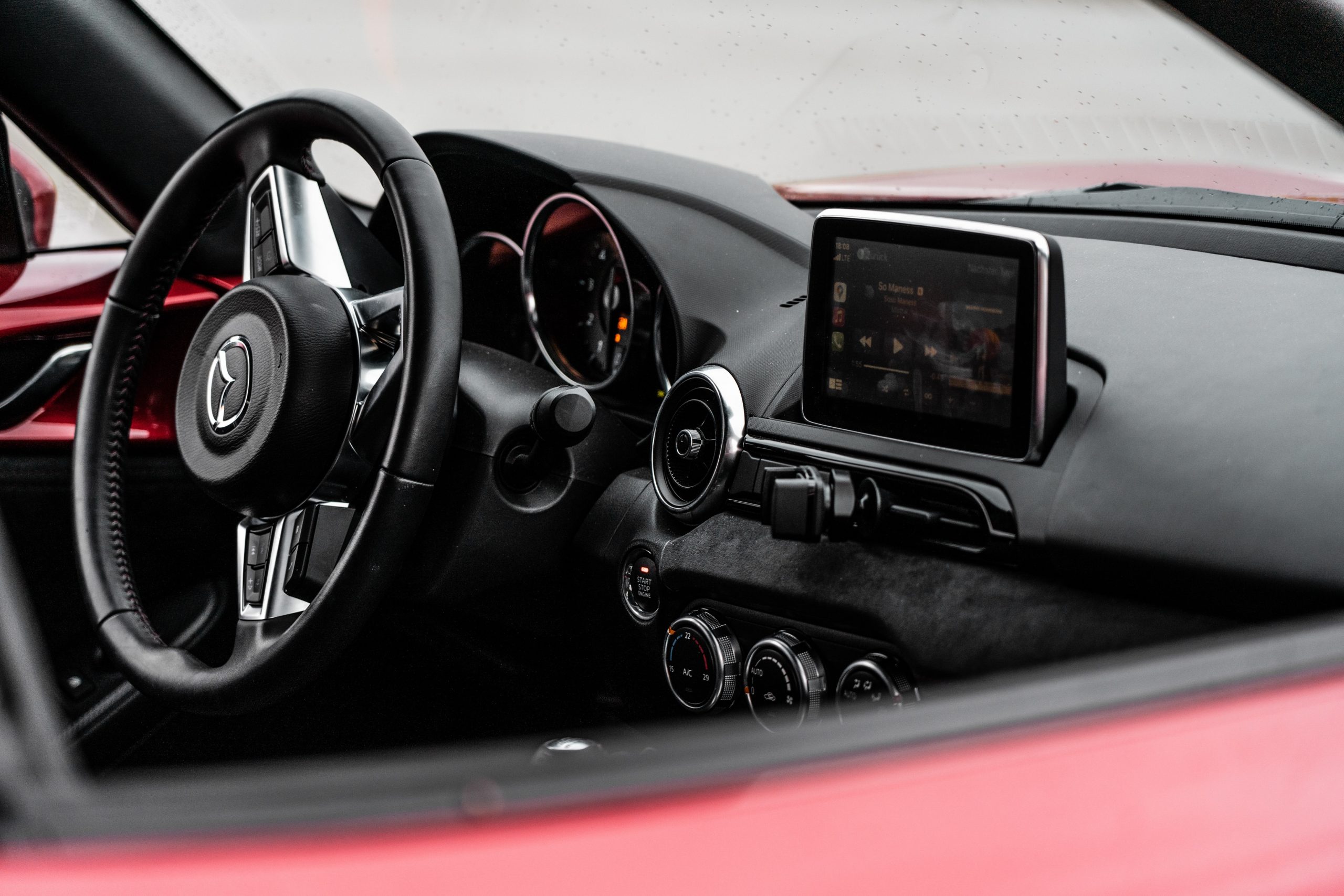
Go shopping in Hondōri
Hondōri is a bustling commercial area in Naka-ku in Hiroshima, that revolves around the Hondōri street, now a modern shopping arcade.
This “Main Street” runs from Hatchōbori to the Hiroshima Peace Memorial Park and was formerly known as Hirataya-chō. In the early 20th century, Hondōri flourished. In 1931, the installation of lily-of-the-valley lanterns enabled shops to remain open late.
Sadly, the entire shopping area along Hondōri was destroyed by the 1945 atomic bombing, due to the blast and fire. Today, Hondōri is a lively and modern shopping arcade with plenty of shops, ideal for souvenirs from Japan.
Reach Hondōri by taking Hiroshima’s Hiroden (street cars) to the Hiroden Hondori Station or the Astram Line to the Hondōri Station, which is a terminal station.
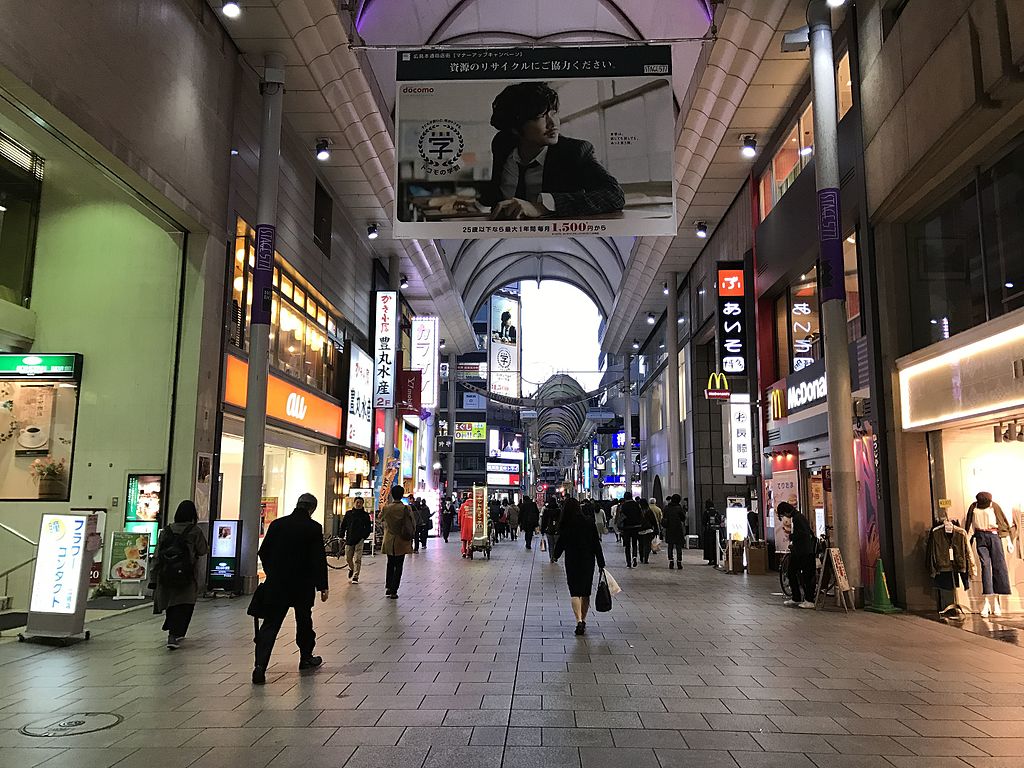
そらみみ, CC BY-SA 4.0, via Wikimedia Commons
Shimanami Expressway
If you’re searching for an unforgettable experience, traversing the Shimanami Expressway by car or bicycle is a must. Similar to Norway’s Atlantic Road, this roadway, and called the Nishiseto Expressway, this wonderful road connects several islands and boasts stunning scenery.
One of the best things to do near Hiroshima is to take a journey along this picturesque route, which spans 70km (43 miles) and features nine bridges, crossing six islands via Japan’s first sea-based highway. You do not need to cycle the entire way to enjoy the scenery, although if you are up for a challenge and have the time and endurance, then, by all means, go for it. This is by far one of the top Hiroshima attractions not to be missed.
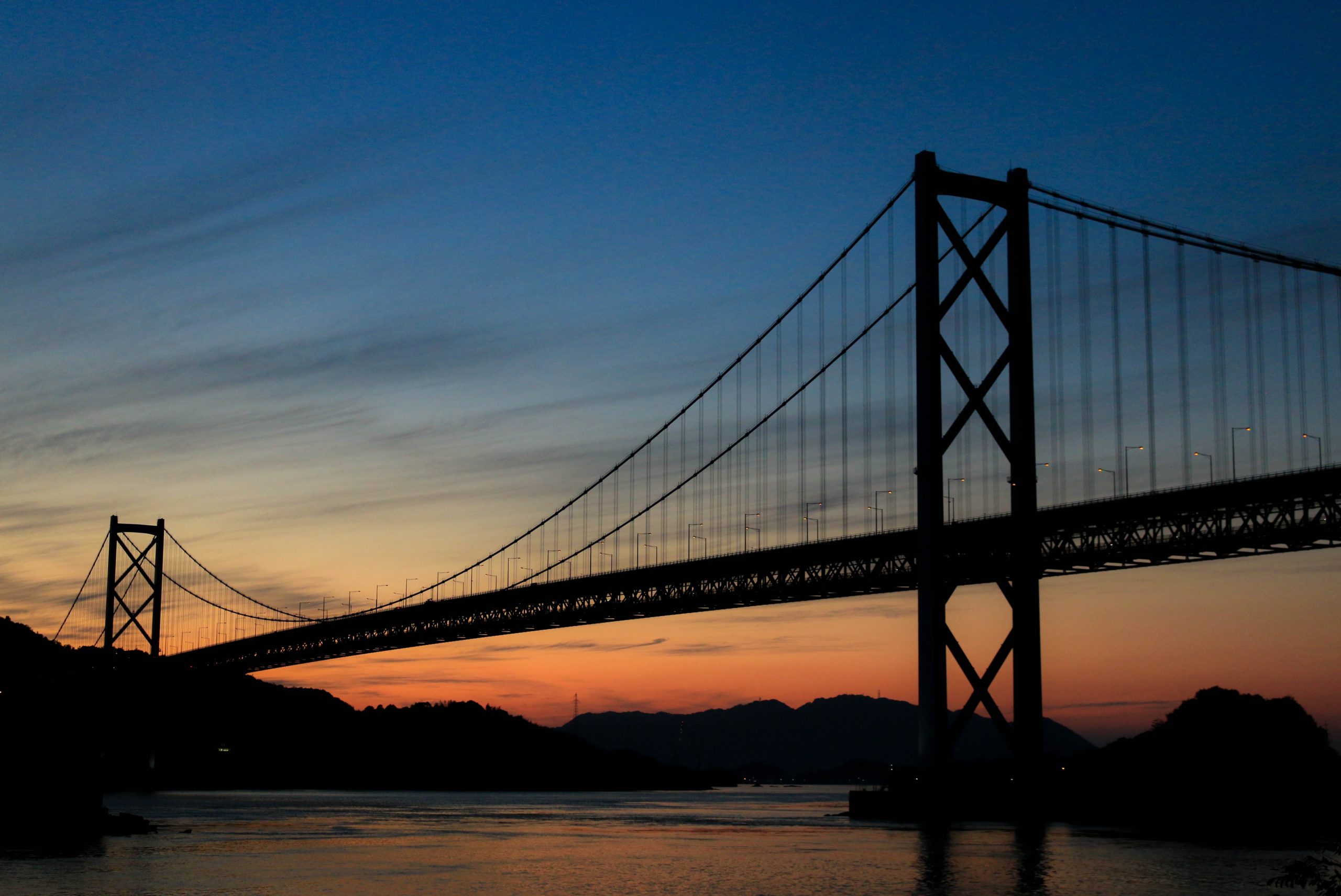
Final thoughts
By now, you can probably tell how excited I am about everything Japan. Visiting Hiroshima and learning about the culture there is one of the top things to do in Japan. I travelled extensively around Japan and honestly, it remains my favourite place to visit year after year.
I put together lots of free guides for you to help you plan your trip to Japan and make it even better.
- Tokyo: Things to do in Tokyo | Where to stay in Tokyo | Tokyo itinerary
- Kyoto: Things to do in Kyoto | Where to stay in Kyoto | Kyoto itinerary
- Osaka: Things to do in Osaka | Where to stay in Osaka | Osaka itinerary
- Other beautiful areas: Nagoya | Nagano | Nikko | Hakone | Yoshino
- Hokkaido: Hokkaido itinerary | Where to stay in Sapporo
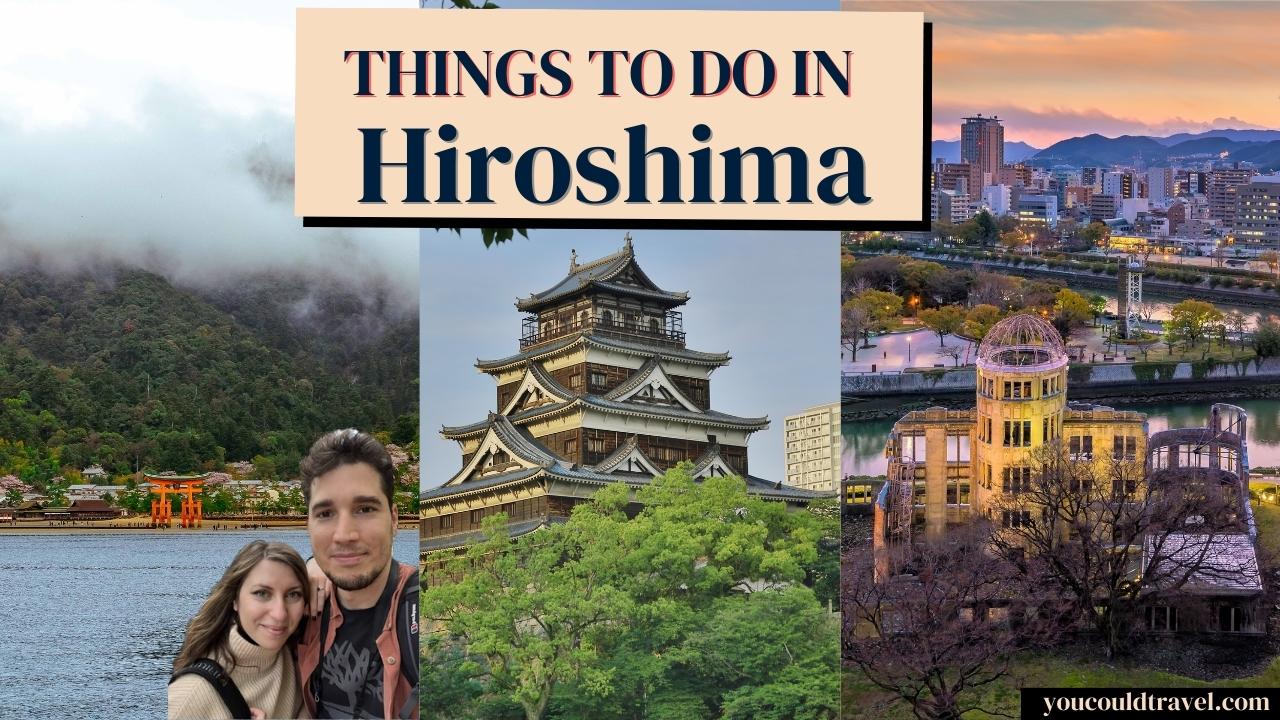
Frequently Asked Questions
Is visiting Hiroshima worth it?
Hiroshima is one of the best main cities to visit in Japan. It’s a very beautiful Japanese city with plenty of things to do, unique local food and very friendly locals. The city is steeped in history and culture, and offers a unique perspective on the impact of war and the importance of peace.
How many days should I spend in Hiroshima?
I recommend 2-3 days in Hiroshima to see the main attractions, enjoy the best shopping and culinary experiences and get to do a trip to Miyajima island. If you want to take a more relaxed approach to the trip and delve deeper into the culture and history, then you might want to add another day or two.
Is it safe to visit Hiroshima now?
Yes, Hiroshima is safe to visit. There are still trace amounts of radiation in Hiroshima, but the city is considered very safe when it comes to health and safety. The local authorities continue to monitor the effect of the nuclear bomb and it’s important to follow any safety precautions or guidelines when visiting specific places which have been directly affected. In terms of crime rate, Hiroshima, much like the rest of Japan, is very safe to visit.

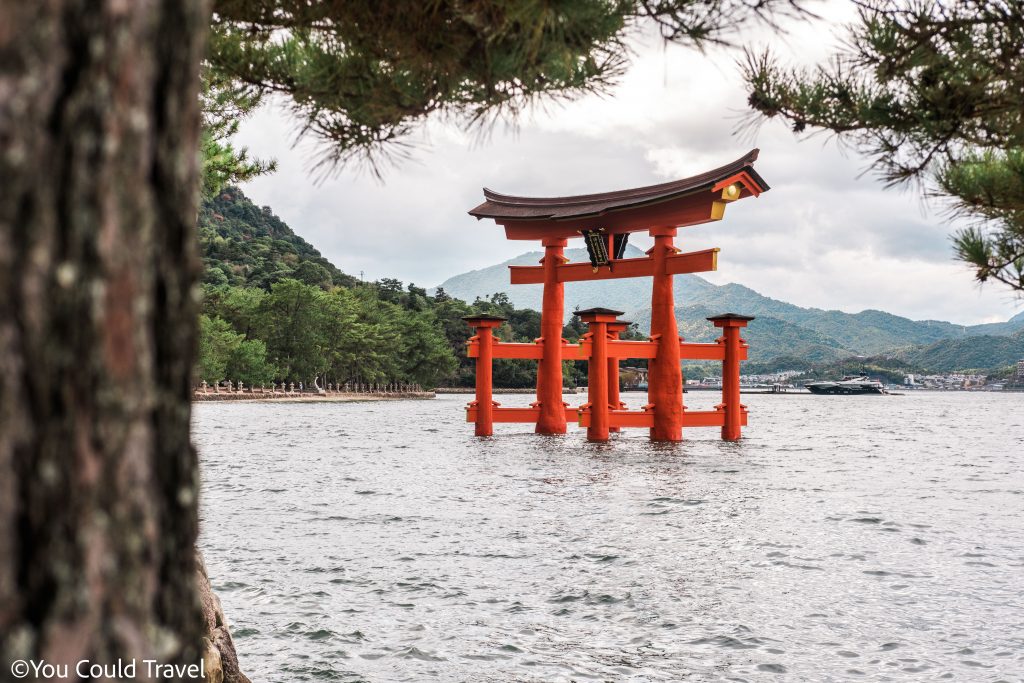
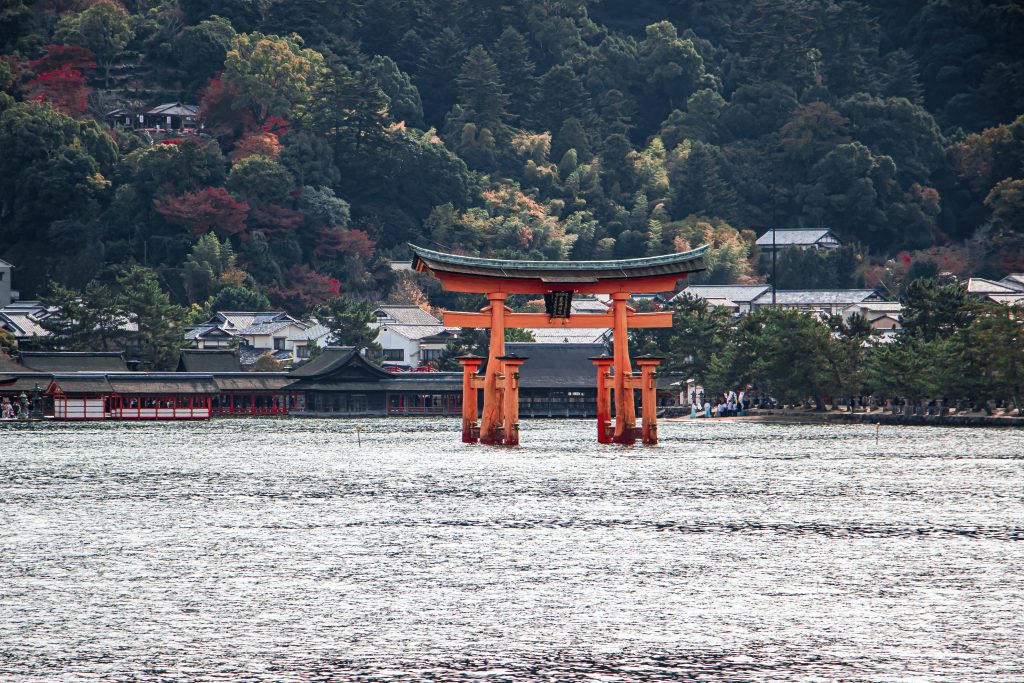
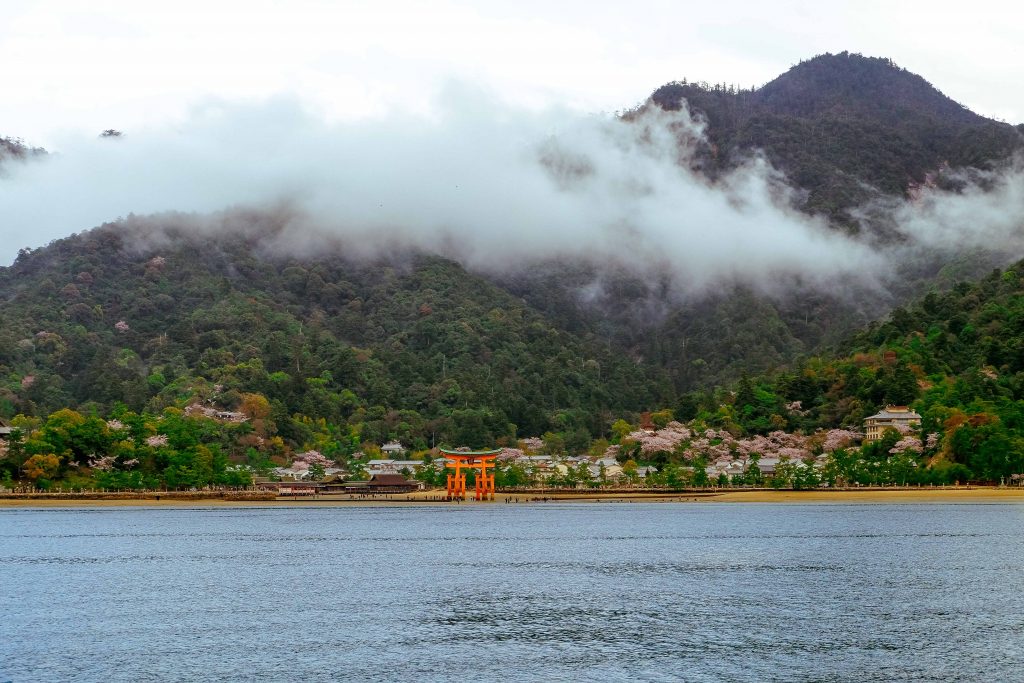
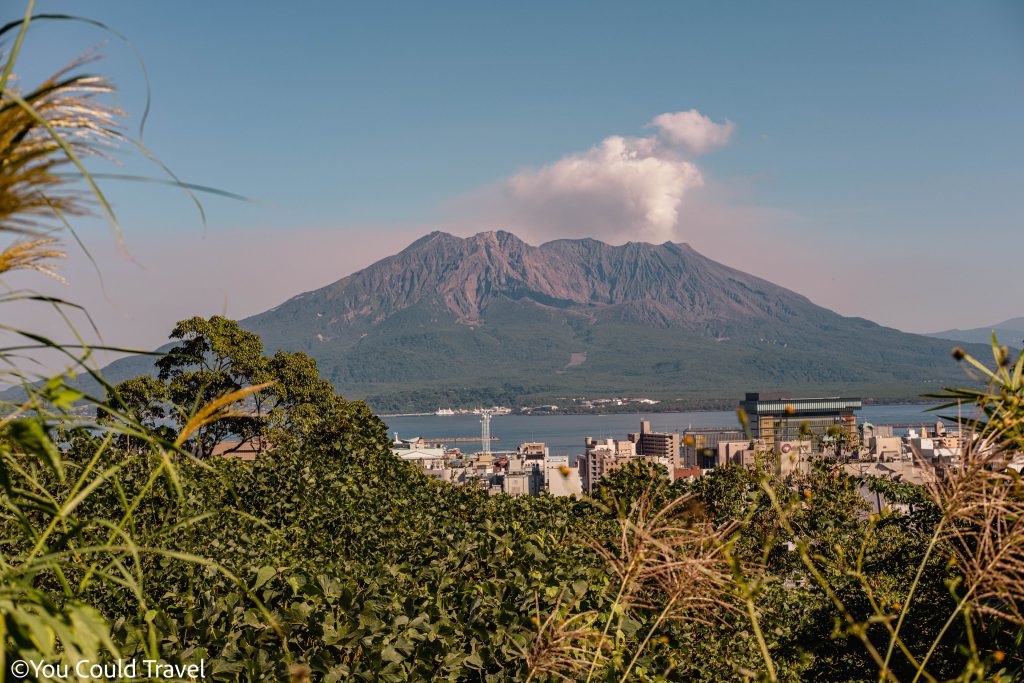
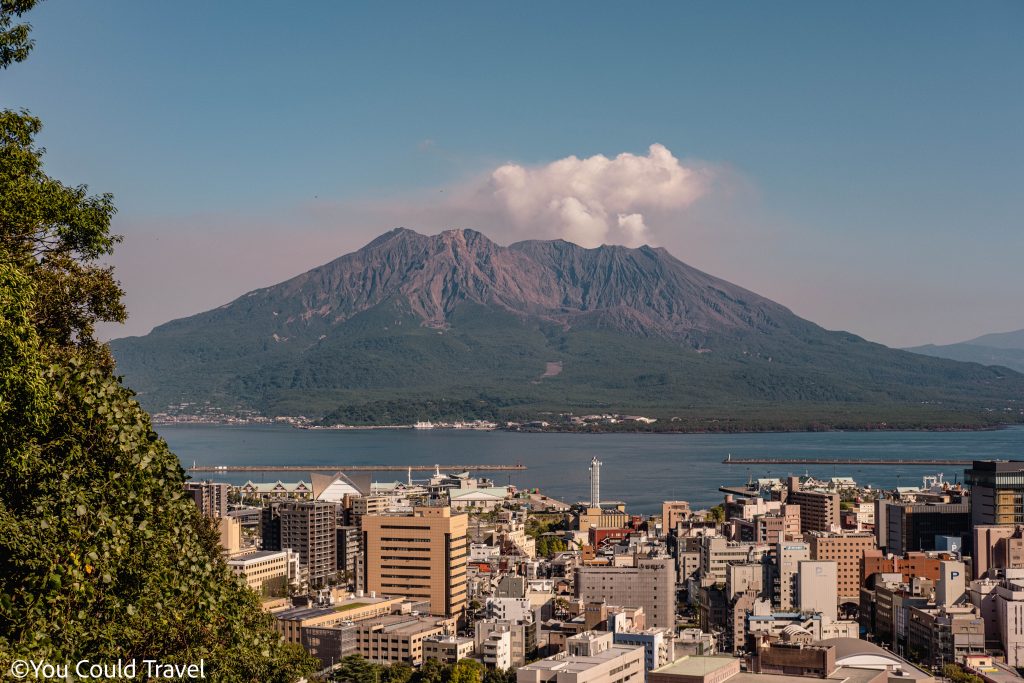
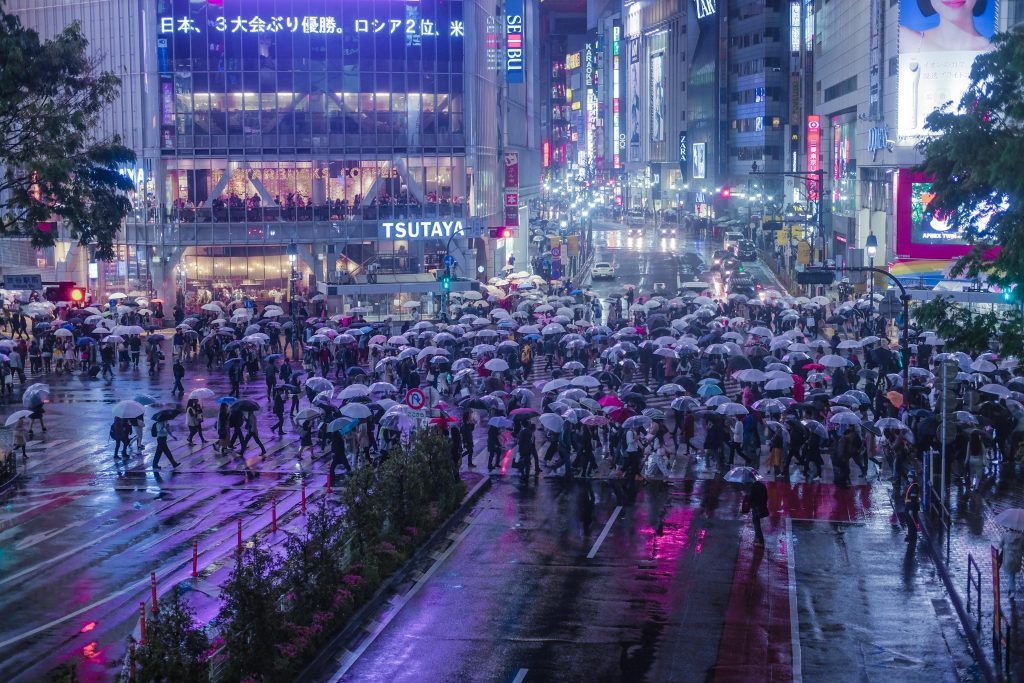


Leave a Reply